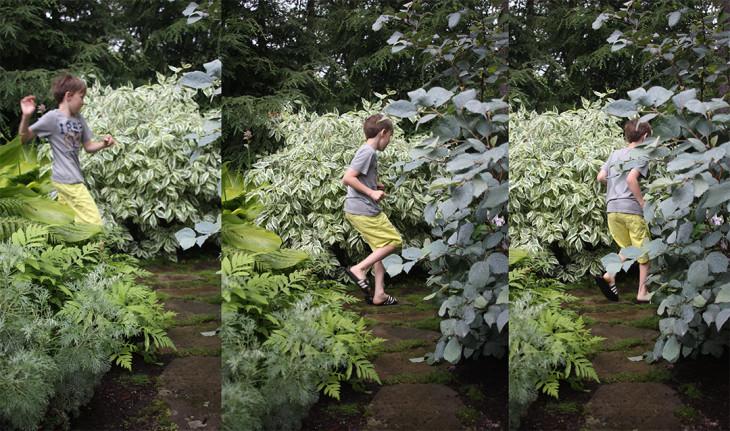
We need kids that can tackle the environmental and health problems of the world around us. There is no better way foster their natural enthusiasm than to create a science filled backyard that draws them outside with enticing adventures and then keeps them there, having fun, in a beautifully designed outdoor learning environment. Your garden-based outdoor classroom can be a beautiful place for you and your family.
I’m not talking about a patch of grass with some bushes around the edges (boring). I don’t even think that type of “garden” has any real value for kids.
Rather, a place that starts to teach and inspire them towards the art and science of caring for our environment. Yes, they need a place to burn energy. But they also need a place to explore and feed and challenge their curiosity and minds. With a little thought, the battle over screen time can become easier and your outdoor classroom can be the place they want to be.
An inspiring and enticing backyard garden doesn’t just make you happy and increase your property value. It is place where people (especially the littlest ones) are encouraged to explore and learn about nature, biology and natural wisdom in general. If you are a homeschooler, or a parent who simply wishes to inspire your kids to more backyard adventures, this guide to home-based outdoor classrooms will help.
How can we motivated kids to engage with their environment?
One answer can be found at the home of two Massachusetts scientists. These parents have been experimenting with a living laboratory and outdoor learning environment in their small, suburban backyard.
The couple have a strong background in molecular biology, and have designed a space that functions as a small, relatively self-sustaining ecosystem. They use it as an al fresco outdoor classroom – a garden science lab and a place for backyard science- for their three children.
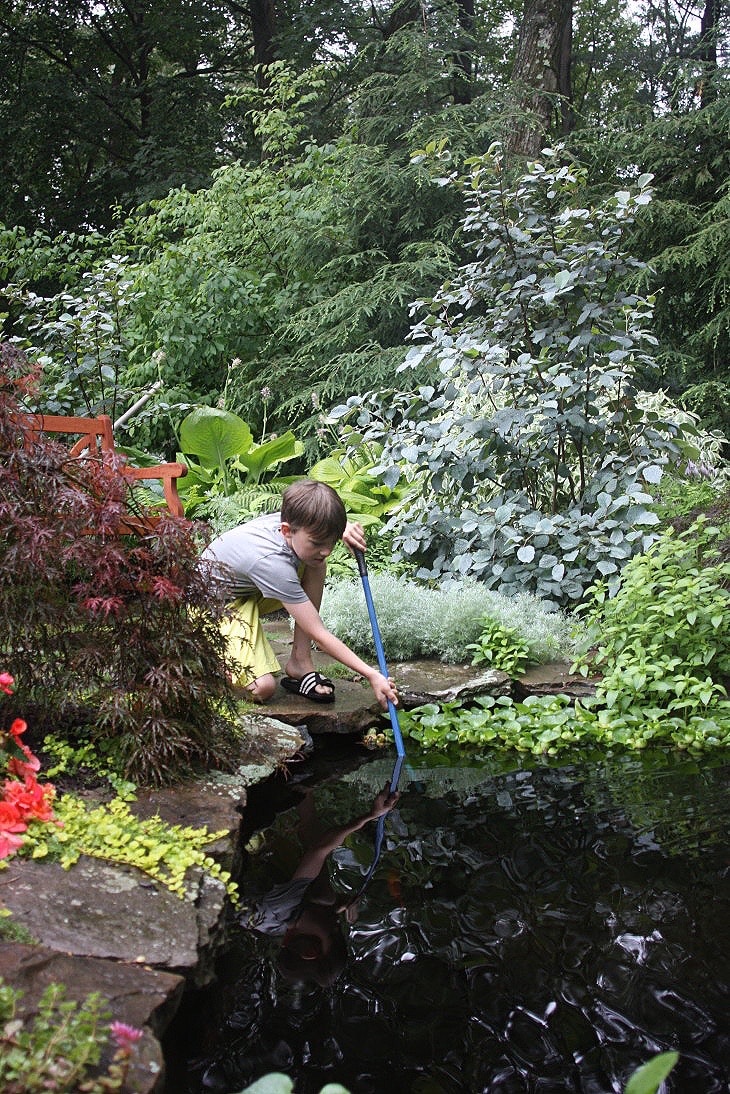
How to design a backyard science Lab
The garden, was designed to invite wildlife and the encroaching woodlands into the backyard, encouraging a seamless flow between nature and the suburban household.
Many of the plant species are native to the area, requiring minimal maintenance. The garden revolves around its small pond, complete with koi fish, frogs and a snake, while birds linger and nest in branches overhead. Tall evergreens line the yard, hiding the neighboring properties from sight and drawing the eye outward, over the garden and into the woods.
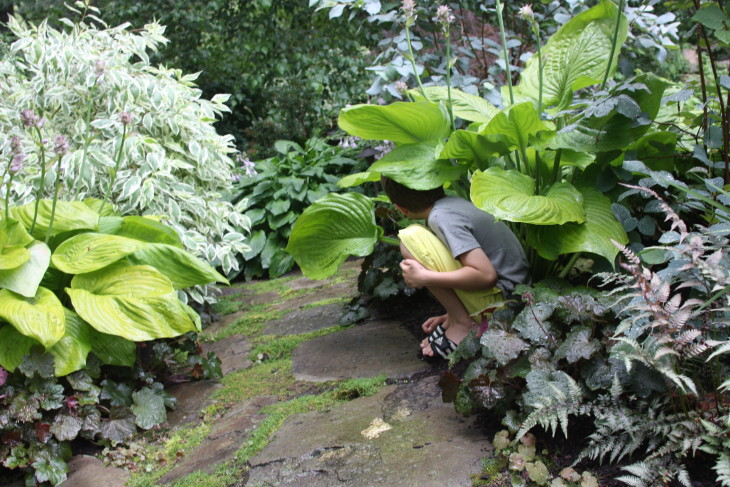
Tom Wilhelm from A Blade of Grass, the designer of the garden, took the traditional elements of a children’s garden, small benches, thick shrubbery, hidden places to explore, and imbued each with unique properties to enhance learning and highlight the use as an environment for outdoor learning.
Wilhelm explains:
“these moments can be as simple as including butterfly bush or fruit-bearing shrubs that attract birds, thereby allowing children to observe the mutualism between flora and fauna. They can also be somewhat more complex, such as encouraging children to collect and study the tadpoles in a pond, or the dragonfly eggs floating near the water’s surface.”
Tom Wilhelm – A Blade of Grass
Promote an appreciation for Nature and Empathy for the Creatures it shelters
An educational classroom garden should promote an appreciation for nature and empathy for the creatures it shelters, as well as an understanding that everything is connected. The backyard biology of the garden, becomes a microcosm for the world’s environment as a whole.
Encourage children to embrace the outdoors and nurture it by making a garden a place not just to run. But also make it a place to hide, a place to climb and a place to learn, even where space is limited. (We can only hope they will carry this perspective with them into adulthood).
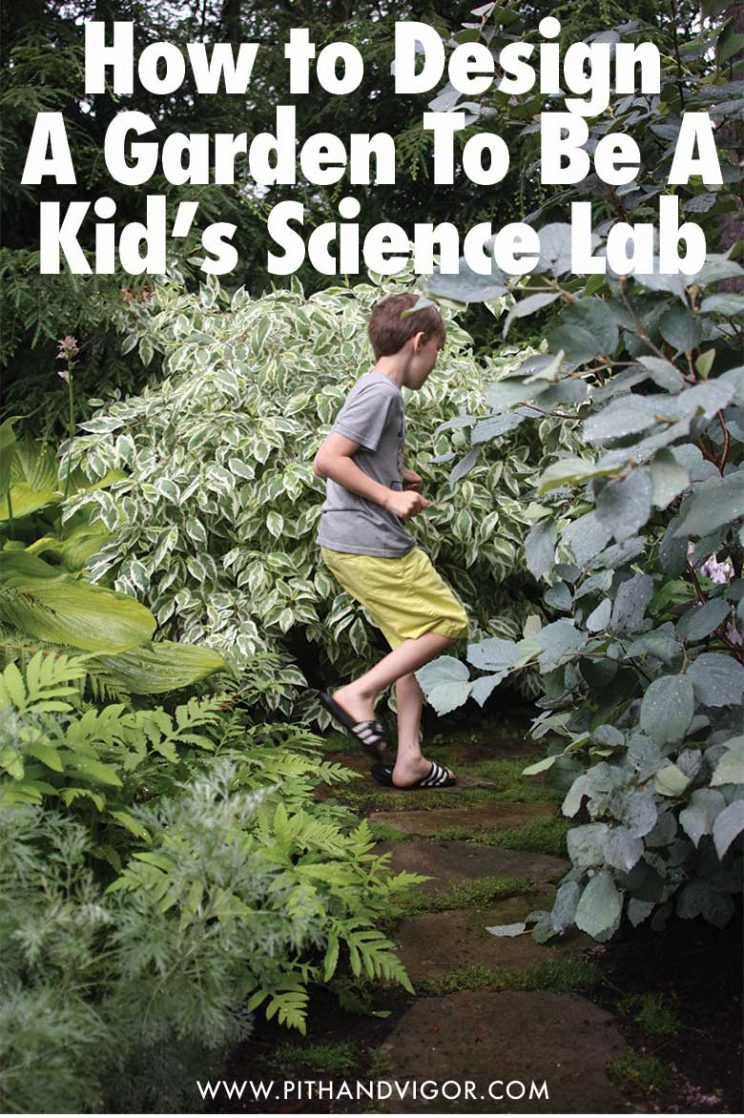
Science Adventures in the Backyard – Lesson Ideas
There are so many lessons that can be learned in and through a garden. While most of the learning that takes place in outdoor gardens is experiential, educational gardens can serve as great ways to start conversations on a variety of topics.
Ideas for Garden backyard science lab lessons:
- Science: conservation, evolution, seasons, food (buying locally, pesticides, organic), symbiosis.
- Horticulture: tending particular plants (shade v. sunlight, varying soil types, water regulation), photosynthesis, plant identification.
- Literature: as simple as reading outdoors on a shaded bench, or as creative as designing a Victorian-themed garden and reading classics.
- Art: paint or draw the creatures, plants, and structures in the garden, design new paths/flower beds, create topiaries.
- Nature & Wildlife: Ecology, habitat maintenance, insects and pollinators. How do they relate?
- Business: Many garden products can be sold at local farmers markets. Give kids an opportunity to plan small businesses that go beyond the lemonade stand.
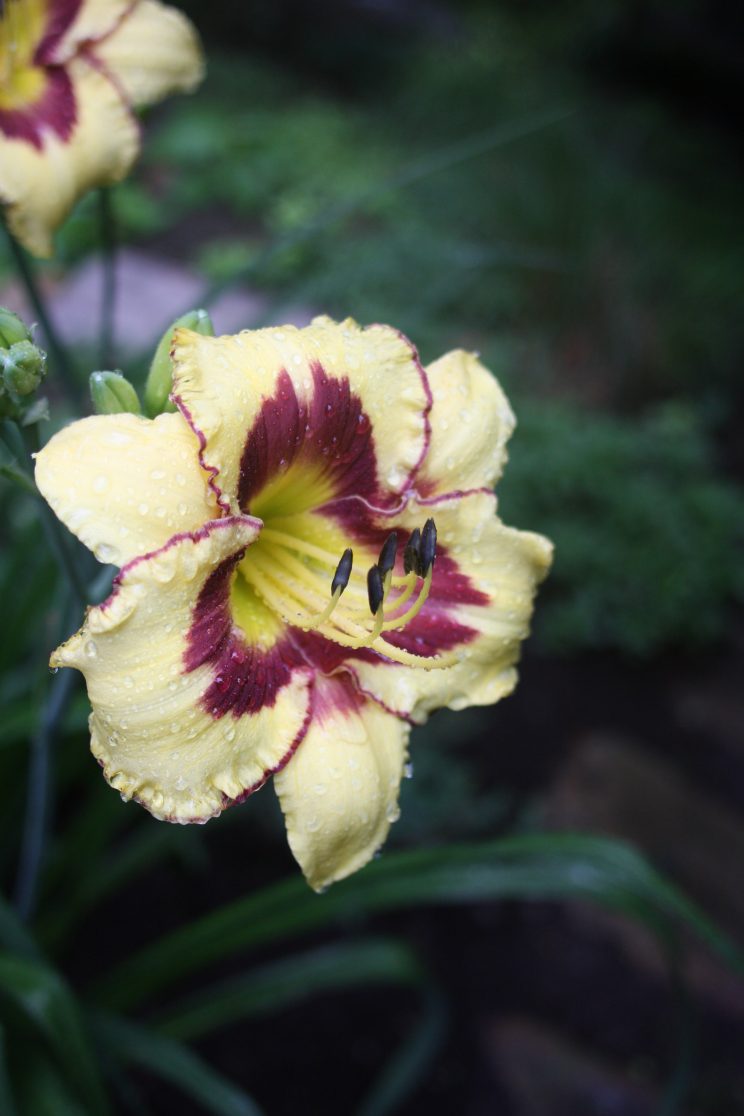
Perfect flowers are the most common type of flowers and are great options for outdoor classrooms. They are easy to grow and excellent subjects for a teaching a wide variety of experiments in hybridization, pollination and genetics as well as investigations in flower structure and basic biology.
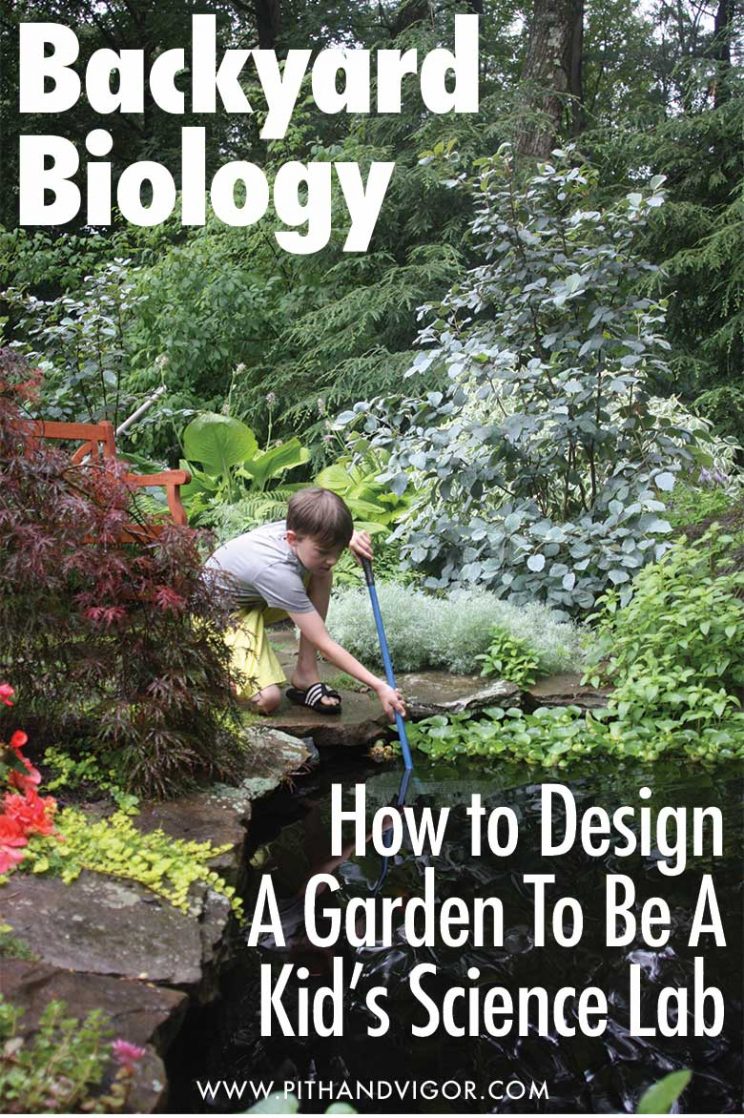
6 Ideas for Making Your own Backyard Classroom and Outdoor Learning Environment:
1) The Best learning is Experiential
Gardens that include interactive elements (like a koi pond or a vegetable patch) encourage kids to learn through observation and take a personal interest in various plants or animals.
These are the foundations of any science-based education and in order to create an exciting outdoor learning environment you need to create tableaus for discovery. Make sure your garden has varied terrain, and features that encourage backyard science.
Alternatively, taking a child to a nursery and asking them to pick a flower to grow and tend (bonus if it starts from a seed!) gives them responsibility and fosters attachment.
Herbs are good because they encourage touching, smelling, and tasting. Grow them harvest them and cook with them.
If the plant is a vegetable, it can lead to conversations about where food comes from, buying locally, etc.
2) Choose plants or features that will attract a variety of wildlife.
Choose plants or features that will attract a variety of wildlife. Inviting wildlife in and establishing a respectful relationship with the creatures that share your garden will foster a lifetime of care and interest in the health of our environment.
Hang bird feeders with breed-specific feed (or plant a shrub with berries), and see how many varieties you can identify.
Plant bright, tubular flowers for hummingbirds and butterflies.
Use the Merlin app to listen for birds and track migration patterns.
3) Know your goals and Imagine Lessons
Do prior research. Know what you hope the garden will teach your children, or allow them to discover on their own. Decide whether you want largely native species, so kids can recognize them at home or away. Include features that suit your educational goals.
4) Don’t assume you need a large space to make a big impact.
This suburban garden in Newton, MA, is only several thousand square feet.
5) Gardens are not static.
They change over time in terms of structure and function, so don’t be afraid to tweak and let your garden grow with you children. Their ideas for backyard adventures with change, as will their interests, don’t be afraid to let the environment for outdoor learning change too.
6) Pay Attention to What They (your kids) Pay Attention To
Follow their curiosity and create features that build off their natural interests.
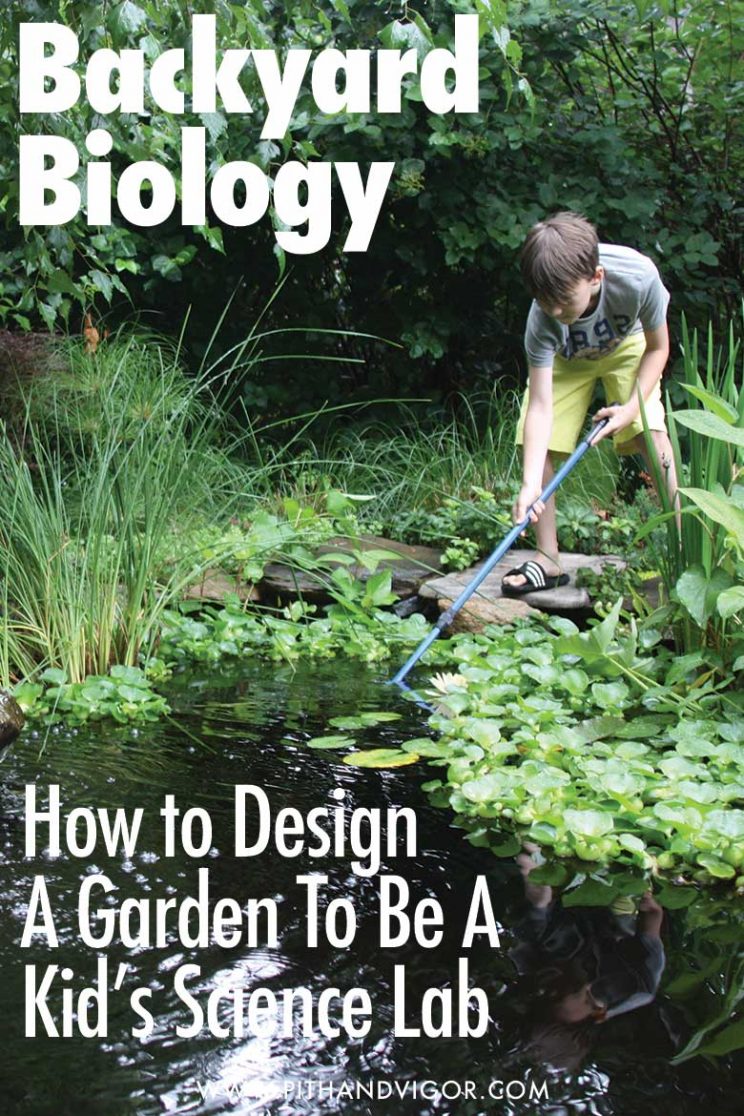
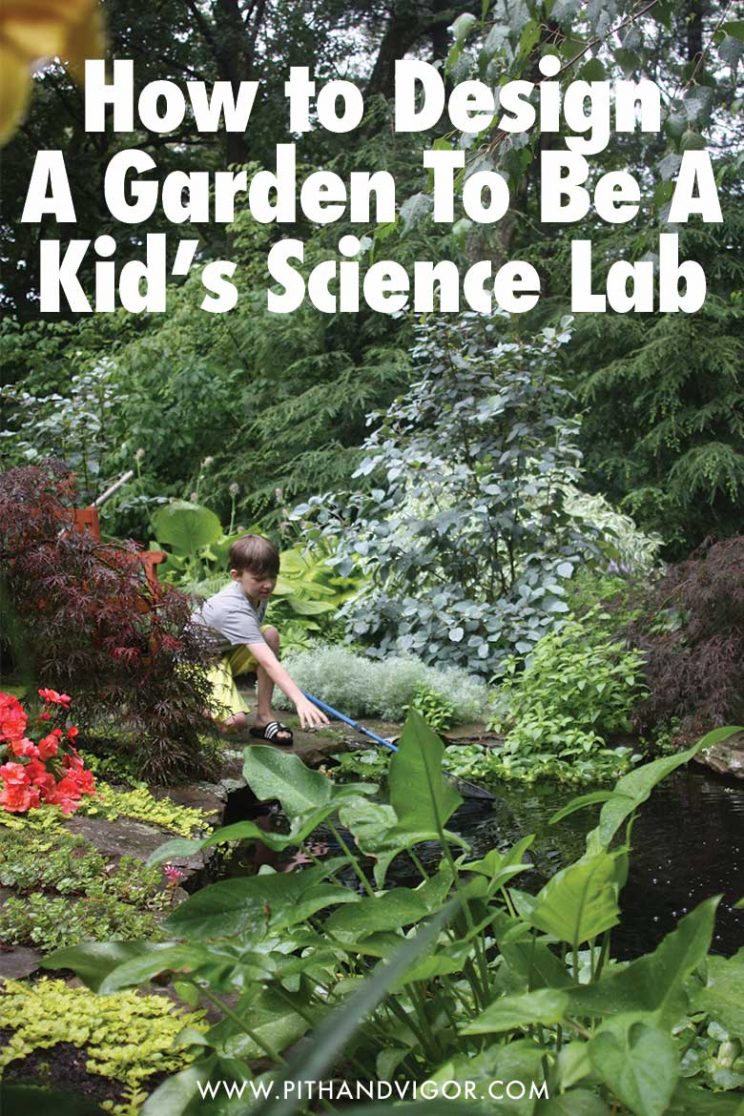
Editor’s Note:
As a testament to the design, these photos were easy. I wanted to photograph the garden with a kid. (and since I had one that lives with me, I brought my young son along)
At the start, he wasn’t enthusiastic about an afternoon posing in someone else’s garden. There were bribes involved. But in the end, I didn’t have to pay up.
The koi pond distracted and entertained my son for as long as I needed (and then some). He was having so much fun – lost in his own backyard adventures – that he forgot about not wanting to help. We both loved this place. Maybe because there were no distracting and garish plastic toys? Rather, there was mystery and surprise around every corner.
It also felt bigger than it was. The trails that curled around themselves and the obscured views create a greater sense of space. It is not only a small, relatively self-sustaining ecosystem, which the owners use as a beautiful garden classroom but a place that he and I both found to be encouraging of play and movement (more than any old patch of grass!) .
– Rochelle
This is exactly what I wish I had as a kid! Now approaching the age where thinking about kids is a possibility, it’s something I’ll ensure they grow up with. Great piece, thanks for writing 🙂
What a good story, I too would have loved to grow up in an environment like that, there garden areas look beautiful and full of life. My kids love to help in the garden and it’s a highly effective way for them to learn while having fun. Thanks